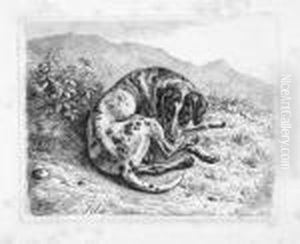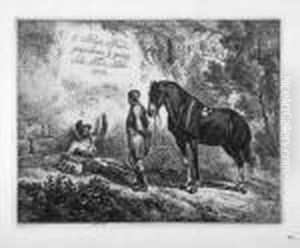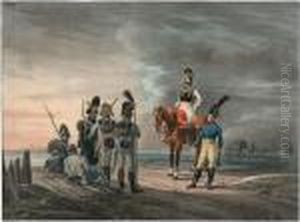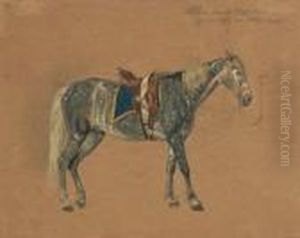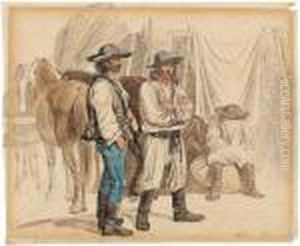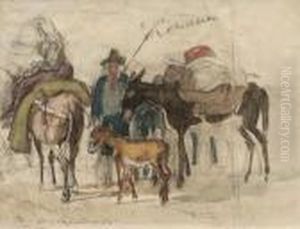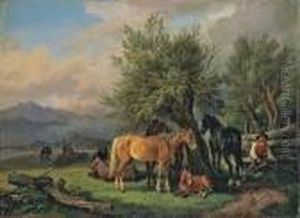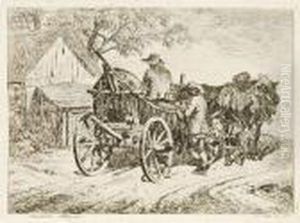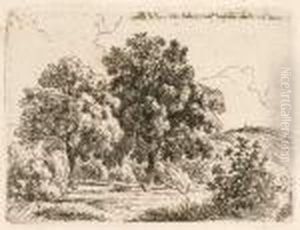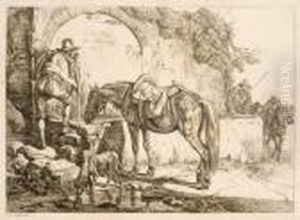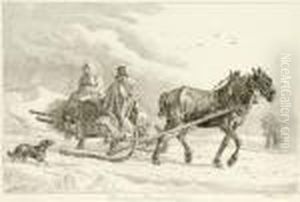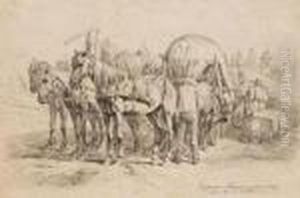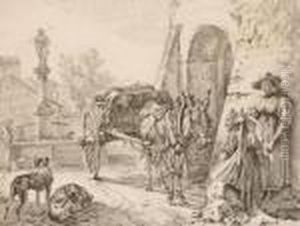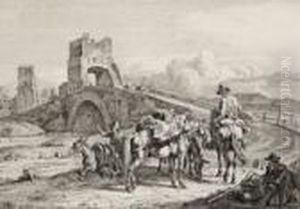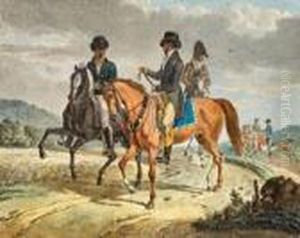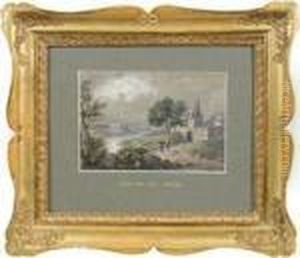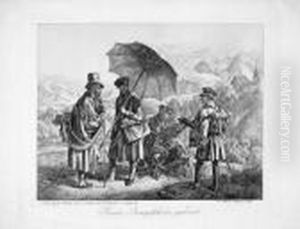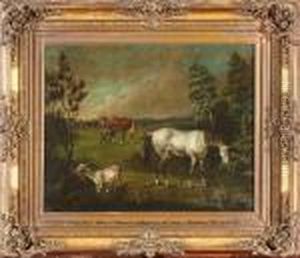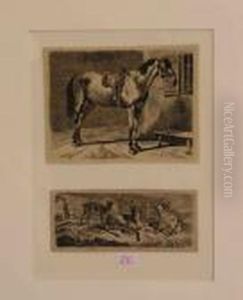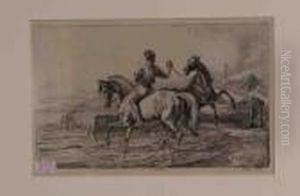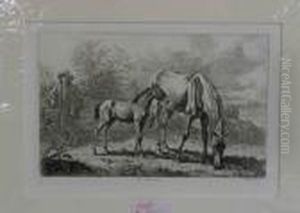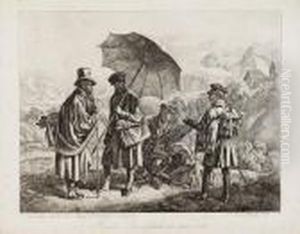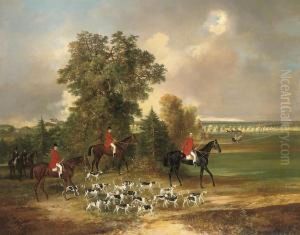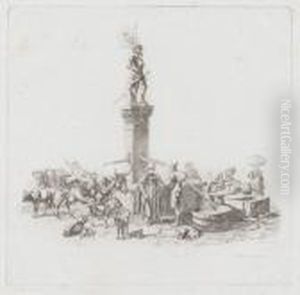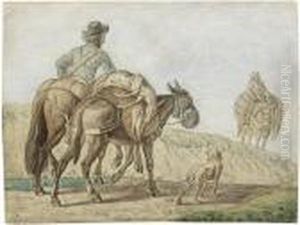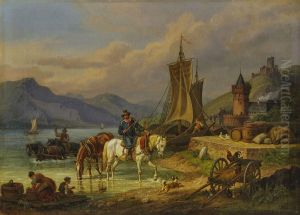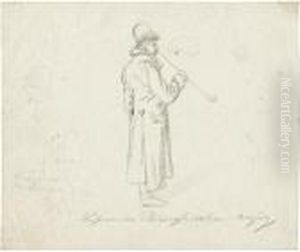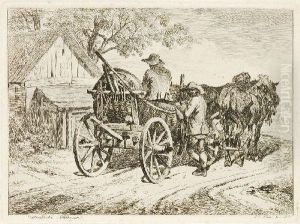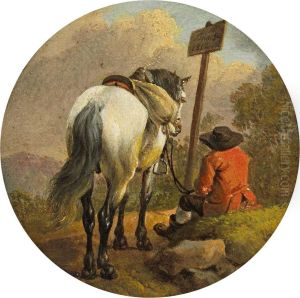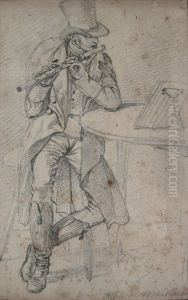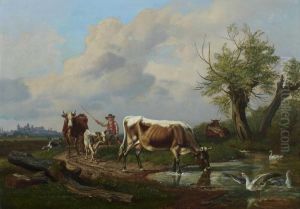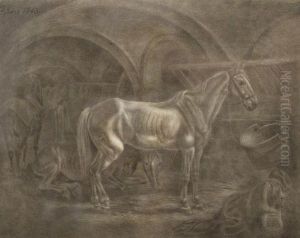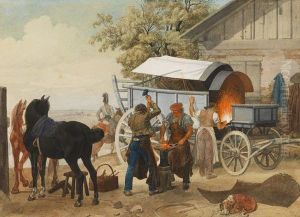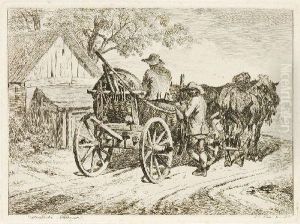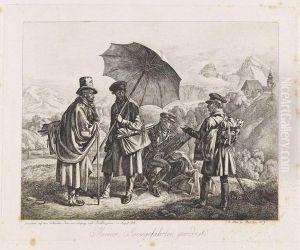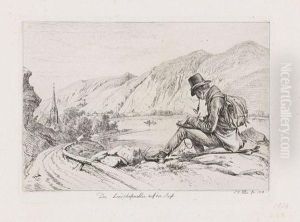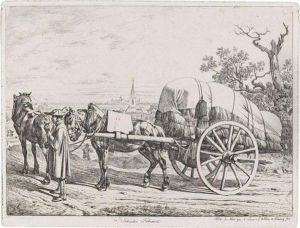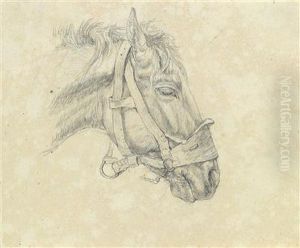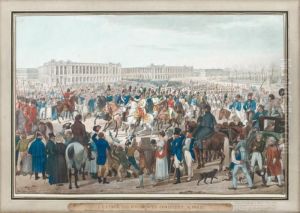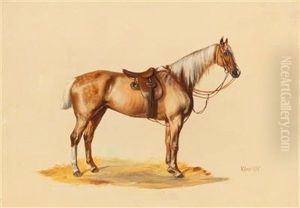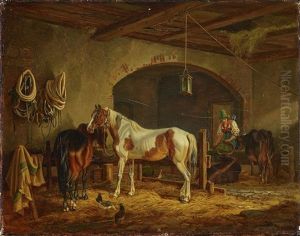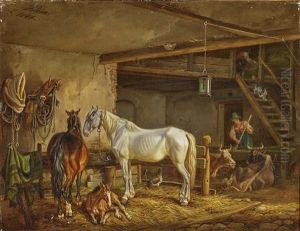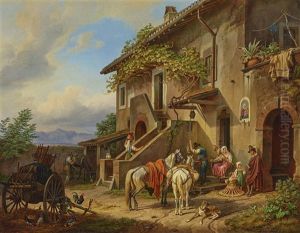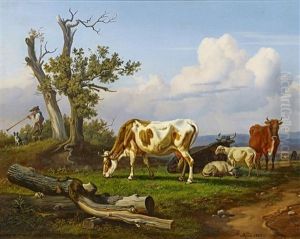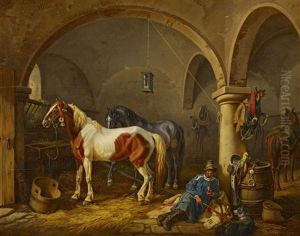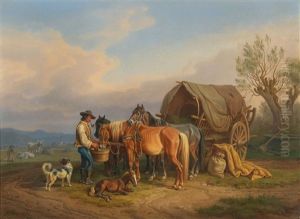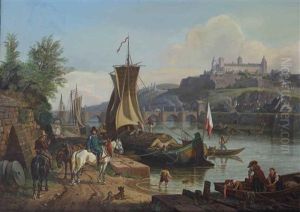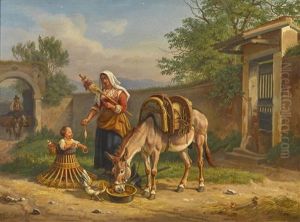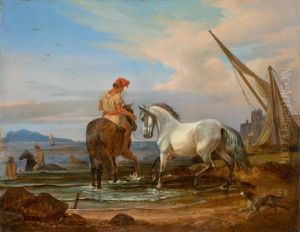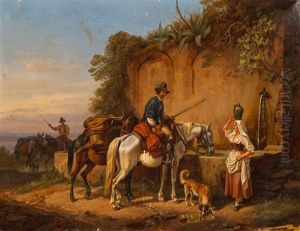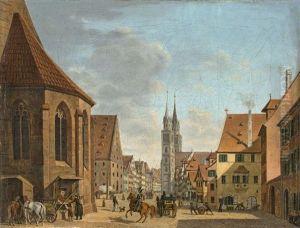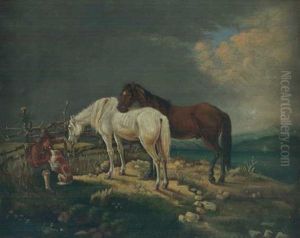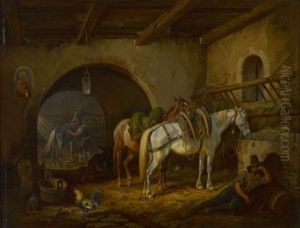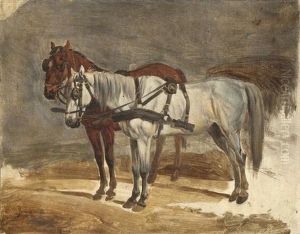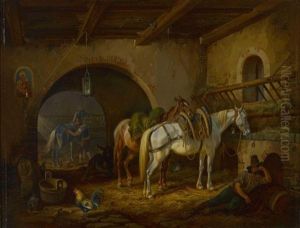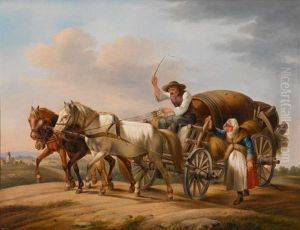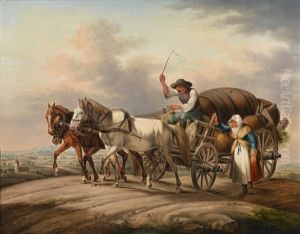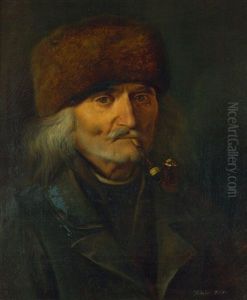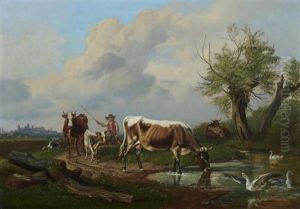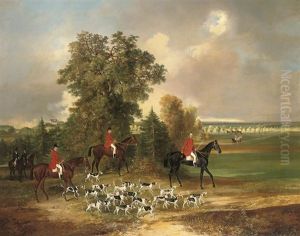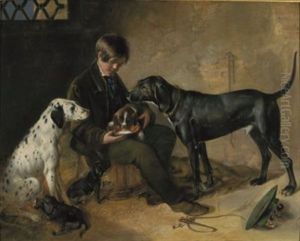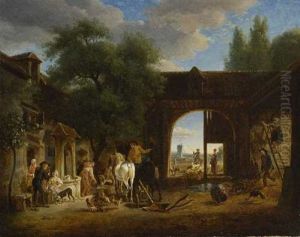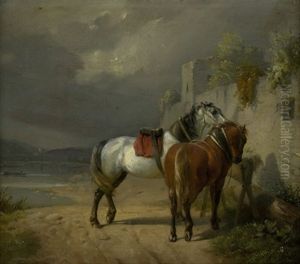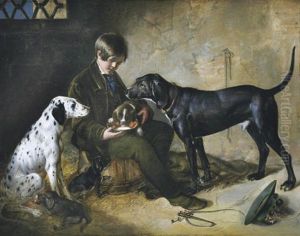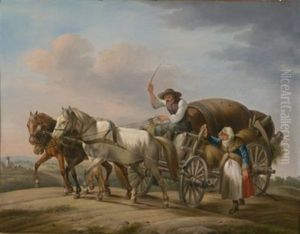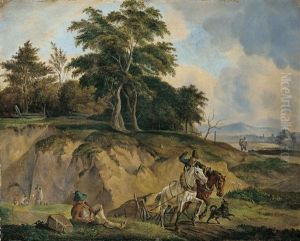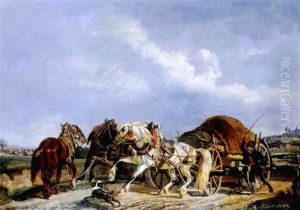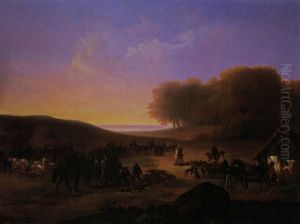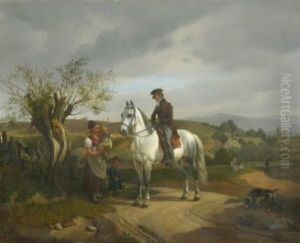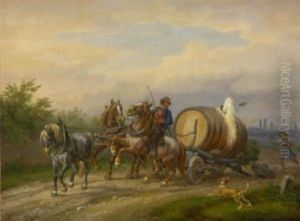Johann Adam Klein Paintings
Johann Adam Klein was a German painter and printmaker born on April 24, 1792, in Nuremberg. He is best known for his detailed prints and drawings that vividly captured everyday life, landscapes, and the costumes of the 19th century. His work serves as a valuable historical record of the period's social and cultural aspects.
Klein showed early talent in the arts and began his formal training at the Nuremberg Academy. He furthered his studies under the guidance of Albrecht Christoph Wilhelm von Kammere, who was a notable engraver and painter at that time. Klein’s passion for travel and interest in capturing the world around him became evident when he journeyed extensively throughout Germany, Austria, and Italy. These travels greatly influenced his artwork, and he began to produce a series of landscape etchings and watercolors.
In 1811, Klein moved to Vienna, where he was particularly inspired by the work of the British artist William Turner, whose approach to landscape painting was groundbreaking at the time. Klein’s own style evolved to reflect a keen observation of nature and the human figure, demonstrated through his genre scenes and animal studies. He also worked on numerous illustrations for books and periodicals, which added to his reputation as a skilled printmaker.
After his time in Vienna, Klein traveled to Rome in 1818, where he was influenced by the Italian landscape and the classical art that surrounded him. His experiences in Italy further enriched his artistic repertoire, and he produced numerous sketches and watercolors that were highly praised for their attention to detail and atmospheric qualities.
Upon his return to Germany, Klein settled in Munich in 1820, where he became a member of the Munich Art Academy. He continued to work prolifically, creating etchings, drawings, and watercolors that captured the Bavarian and Austrian landscapes, as well as scenes from everyday life. His work was characterized by its lively depiction of people and places, often with a touch of humor.
Klein’s contribution to the visual arts was significant, as his work provided a documentary-like insight into the life and times of the early 19th century. He was not only a talented artist but also a keen observer of the world, which he depicted with a charming and detailed realism.
Johann Adam Klein passed away on June 21, 1875, in Munich. Today, his work is held in various collections and museums, where it continues to be studied and appreciated for its historical value and artistic quality.
